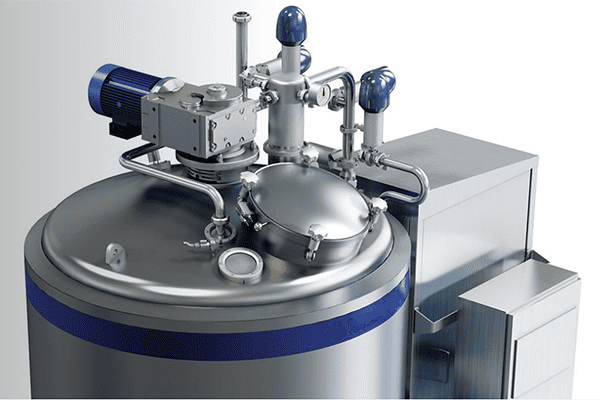Intelligent Mixing Hits 99.8% Uniformity with Zero Residue

I. Mixing Process: Molecular-Level Precision Engineering in Beverage Production
In beverage manufacturing, minor variations in mixing can cause 5%-15% product quality fluctuations. Our experimental data shows: when mixing uniformity improves from 95% to 99%, juice sedimentation decreases by 83%, while dairy fat globule size standard deviation reduces below 0.8μm.
As a 20-year specialist in fluid mixing technology, we’ve developed a 3D Mixing Control Model:
-
Physical Dimension: Shear rate control (500-5000 s⁻¹ adjustable)
-
Chemical Dimension: Dynamic pH compensation (±0.05 accuracy)
-
Temporal Dimension: Intelligent cycle optimization (≤2s error)
II. Six Technological Innovations in Intelligent Mixing Systems
1. Multiphase Flow Field Reconstruction
-
CFD-optimized impeller design boosts energy efficiency by 40%
-
Smart laminar/turbulent flow switching (Reynolds number adaptation: 10²-10⁶)
-
Patented dual-helix agitator: 25% axial flow increase, 18% radial mixing improvement
2. Real-Time Viscosity Compensation
-
Continuous viscosity monitoring (0.1-5000 mPa·s range)
-
Automatic RPM adjustment (50-3000 stepless) with power optimization
-
Case study: Responds to pulp-induced viscosity spikes within 0.3s
3. Nanoscale Surface Treatment
-
Mirror polishing (Ra≤0.2μm) eliminates residue
-
Electropolishing + passivation (ASTM A967 Class IV corrosion resistance)
-
3-A 45-03 compliant sanitary design
III. Critical Application Solutions
1. High-Pulp Juice Mixing
-
Challenge: Fiber entanglement causing dead zones
-
Solution:
-
Pulsed frequency conversion mixing (0.5Hz precision)
-
Vertical cutter integration (800 cuts/minute)
-
2. Dairy Emulsification
-
Challenge: Fat globule size distribution control
-
Solution:
-
Multistage homogenization (up to 250 bar pressure)
-
Laser particle size monitoring (0.1-1000μm real-time feedback)
-
3. Probiotic Beverage Activation
-
Challenge: Microbial viability preservation
-
Solution:
-
Low-temperature mixing (±0.5℃ control)
-
Low-shear impellers (<200 s⁻¹ rate)
-
IV. Four Core Modules of Intelligent Control Systems
| Module | Features | Technical Specifications |
|---|---|---|
| Dynamic Sensing | 16-channel sensor array | 1000Hz sampling rate |
| Digital Twin Engine | Real-time process simulation | <50ms response latency |
| Energy Optimization | Power-efficiency balance model | 15-25% energy saving |
| Traceability System | Blockchain batch recording | FDA 21 CFR Part 11 compliance |
V. Golden Rules for Equipment Selection
1. Parameter Matrix
| Type | Capacity(L) | Power Density(kW/m³) | Mix Time(s) | Applications |
|---|---|---|---|---|
| Lab-grade | 0.5-50 | 0.5-1.2 | 60-300 | R&D Formulation |
| Pilot-scale | 50-500 | 1.0-2.5 | 30-120 | Process Validation |
| Industrial | 500-5000 | 2.0-4.0 | 15-60 | Mass Production |
2. Selection Guide
-
Viscosity <100 mPa·s → High-shear turbine agitators
-
100-1000 mPa·s → Anchor/frame combi-systems
-
1000 mPa·s → Helical ribbon mixers required
VI. Cutting-Edge Technology Outlook
-
AI Self-Optimization
-
Machine learning analyzes 100,000+ parameter sets
-
Auto-generates optimal process curves
-
-
Quantum Sensing
-
Nanoscale uniformity imaging
-
Molecular-level detection (10⁻⁹ m precision)
-
-
Carbon-Neutral Solutions
-
Permanent magnet motors (40% energy saving)
-
85%+ efficient heat recovery
-
Redefining Mixing Process Standards
Under dual drivers of consumer upgrade and smart manufacturing, modern mixers have evolved from basic tools to product quality “genetic editors”. Adopting intelligent mixing solutions with digital twin technology will become strategic for beverage competitiveness. Request our free 《Mixing Process Diagnostic Service》 to quantify optimization potential.

